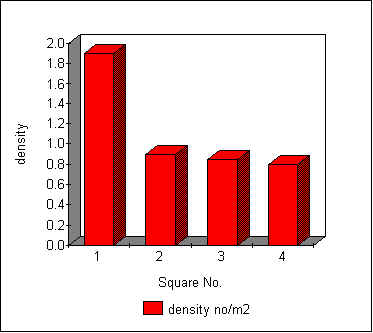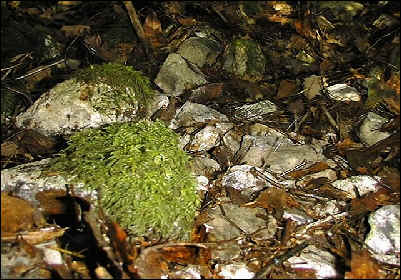Woodland Restoration Project
 |
It is likely that this difference in growth-form is related to the number of silver birch trees which occurred in this area. The density of silver birch trees was fairly constant over the project site, except in the area of square 1, where the density was nearly doubled (Fig.4). |
Figure 4. Silver birch density. |
| The substrate in the area of square 1 was very shallow and stony (Plate 8). It is possible that these conditions are generally unfavourable for rhododendron growth. The conditions are unlikely to have favoured the growth of silver birch either. However, it is probable that slower growth of rhododendron in this area originally allowed more silver birch seedlings to survive and grow tall, than in other areas where the rhododendron was growing prolifically. |
 |
Silver birch was fairly evenly distributed in square 1. In other areas of the project site it tended instead, to occur in clumps. This suggests that in these areas the seedlings only survived in isolated patches as yet uncovered by rhododendron, whereas in square 1 the silver birch and rhododendron were competing equally. |
Plate 8. Stony, shallow substrate in Square 1. |